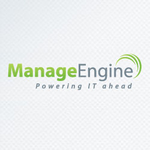What Is Data Integration Software?
Businesses may synchronize, merge, and transform data from multiple sources into a single, cohesive format with the help of data integration software, commonly referred to as data management software. This software is essential for helping businesses make effective decisions and extract insightful information from their data. Above all, data integration software enables companies to combine information from several sources, such as files, databases, and apps, into one central area. This ensures data correctness and consistency by doing away with the necessity for human data entry and lowering the possibility of mistakes.
Data cleansing, data matching, and data transformation are just a few of the many tools and functions that data integration software provides. Regardless of the source system, these features allow organizations to not only integrate data but also guarantee that it is consistent and standardized. Supporting real-time or nearly real-time data integration is one of the main advantages of data integration software.
This implies that data can be updated and synchronized in real-time, giving organizations access to precise and timely information for making decisions. Data governance, data quality control, and data lineage monitoring are just a few of the sophisticated features that data integration software provides. By giving businesses a comprehensive perspective of their data and fostering data trustworthiness, these features guarantee that data is kept safe, compliant, and traceable back to its original source.
Finding a solution that provides flexibility and scalability is crucial when looking at data integration software. This will guarantee that the software can adjust and continue to satisfy your demands as your company expands and your data integration requirements change. In conclusion, companies trying to enhance their data management procedures will find that data integration software is an essential tool.
It gives businesses the capacity to unify the integration, cleansing, and transformation of data from various sources, giving them a competitive edge and the ability to make well-informed decisions. To choose the best data integration software for your company's requirements, it's critical to take into account its features, scalability, and adaptability.
What Are The Recent Trends In Data Integration Software?
In today's world of growing data, data integration software has become a vital tool for companies of all kinds. It gives businesses the ability to link and merge data from several sources, giving them a single picture of their data to aid in decision-making. The market for data integration software has expanded significantly in recent years in tandem with the growing need for more effective and efficient data management solutions.
The shift to cloud-based solutions is one of the most important developments in the market for data integration software. Businesses are using cloud-based data integration software because of its scalability, affordability, and flexibility as cloud computing gains traction and data volumes increase.
By removing the need for manual procedures and on-premise hardware, these solutions enable businesses to access and integrate data from several sources in real-time. The use of AI and machine learning capabilities is another trend in the market for data integration software. Data integration software can now handle massive amounts of data, automate intricate procedures, and offer insightful analysis thanks to these cutting-edge technology.
Businesses may gain a deeper knowledge of their data by using data integration software that uses AI and machine learning to find trends, spot abnormalities, and do predictive analysis. In the market for data integration software, security and data protection have also become important considerations. Businesses are being increasingly careful about safeguarding their data as the frequency of data breaches keeps increasing. In order to protect sensitive data, data integration software providers are including cutting-edge security features like data masking and encryption.
Additionally, the need for data integration software that can manage a broad range of data types—including unstructured, semi-structured, and structured data is increasing. The growing usage of social media, IoT devices, and other unstructured data sources is what is driving this trend. Data integration software with sophisticated data transformation and parsing features is therefore highly sought after.
Finally, as big data grows, companies are searching for data integration tools that can process massive amounts of data quickly. High-performance data integration software is becoming essential as businesses aim to obtain real-time insights. To sum up, the most recent developments in the data integration software industry are all focused on giving companies access to more sophisticated, adaptable, and safe data management solutions.
The demand for effective data integration software will only increase as long as businesses continue to produce and utilize enormous volumes of data. Businesses must keep abreast of these developments in order to choose the finest data integration software solution for their requirements.
Benefits Of Using Data Integration Software
One effective instrument that helps companies optimize their data management procedures is data integration software. It gives businesses the ability to collect, compile, and evaluate data from various sources, giving them a complete picture of how they operate. When firms are thinking about investing in data integration software, here are the main advantages that can help them make an informed choice.
1. Enhanced Productivity And Efficiency: Time-consuming manual data input and processing processes are eliminated by data integration software. Time and resources can be saved by using automation to extract, transform, and load data into a central repository. Consequently, it increases output, freeing up team members to concentrate on other essential duties that propel company expansion.
2. Better Data Quality: Built-in tools and algorithms in data integration software guarantee that data is error-free, accurate, and consistent. It assists in getting rid of redundant and insufficient data, which might impede data analysis and decision-making. Better data quality results from this, empowering businesses to make trustworthy and knowledgeable decisions.
3. Improved Data Insights: Organizations may access and merge data from several sources, such as databases, cloud services, apps, and more, with the help of data integration software. This integration makes data analytics and reporting easier while offering a comprehensive picture of business activities. It helps businesses make better decisions by giving them important insights on market trends, customer behavior, and corporate performance.
4. Real-Time Data Processing: Making prompt and well-informed judgments in the fast-paced corporate world of today requires real-time data. Businesses may handle data in real-time with data integration software, guaranteeing accurate and current information. It gives businesses a competitive edge by enabling speedier reactions to shifting consumer demands, market conditions, and internal processes.
5. Scalability And Flexibility: The volume and complexity of data rise with business expansion, making it difficult to handle using conventional techniques. Scalability is a feature of data integration software that enables companies to handle increasing data volumes without compromising efficiency. Businesses may more easily incorporate new data sources and adjust to changes thanks to these technologies' versatility in terms of data kinds, formats, and sources.
Important Factors To Consider While Purchasing Data Integration Software?
To make sure you are selecting the finest option for your particular needs, there are a few crucial elements to take into account when buying data integration software. A technology called data integration software enables businesses to merge data from many sources and formats, giving them a more efficient and thorough view of their data. Before making a purchase, bear the following points in mind:
1.Data Compatibility: Whether the program is compatible with the kinds of data you work with should be one of your first considerations. Does it support the many sources and formats that your company uses? Both structured and unstructured data can be handled by it.
2. Scalability: Your data will expand together with your organization. Selecting software that can manage massive data volumes and expand to meet your company's needs is crucial.
3. Integration Capabilities: Data integration software is designed to make the process of merging data from many sources as efficient as possible. Verify that the software you select offers a variety of integration features, including batch processing, API (Application Programming Interface), and ETL (Extract, Transform, Load).
4. Customization Options: Every company has different requirements when it comes to data integration. To customize software to your unique needs, look for choices for modification. This can entail developing unique reports, procedures, and fields.
5. Cost And ROI: The software's price and possible return on investment should be taken into account. Make sure the program fits within your spending plan and offers enough benefits to make the price worthwhile.
6. Data Security: Security is a key problem as data usage and dependence grow. Seek out data integration software that offers robust security features like data access controls and encryption.
7. User Interface And Ease Of Use: Features that are simple to use and an intuitive interface enhance the software's overall efficacy and efficiency. Make sure the software you select is easy for your staff to use and intuitive.
8. Support And Maintenance: The workflow of your company should be able to easily incorporate data integration software. To guarantee that your software is constantly operational, look for a software vendor that provides sufficient support and maintenance services. When buying data integration software, keeping these things in mind will help you make an informed choice and select the best program for the requirements of your company. In the end, the software you select should make your data integration process more efficient, enhance the quality of your data, and offer insightful information that will propel your company forward.
What Are The Key Features To Look For In Data Integration Software?
In today's data-driven world, data integration software is an essential tool for enterprises. By gathering, purifying, and transforming data from multiple sources in a single, central area, it assists businesses in streamlining their data management procedures. However, selecting the best data integration software can be overwhelming for consumers due to the abundance of options on the market. We've put together a list of essential characteristics of data integration software to help you make an informed choice.
1. Connectivity: The software's connectivity features should be taken into account first and foremost. Data from several sources, including databases, cloud apps, and on-premises systems, should be able to be integrated.
2. Data Transformation: Real-time or batch data transformation should be possible with a good data integration program. Along with capabilities to map and convert data at the source or destination, it should handle a variety of data formats, including XML, JSON, and CSV. 3. Data Governance and Quality: Inaccurate insights and decisions can result from poor data governance. Therefore, selecting software that provides data quality features like data validation, data cleansing, and data profiling is crucial.
4. Security: Since data integration entails transferring private information between systems, security must be given first consideration. To make sure your data is safe throughout integration, look for software that has sophisticated security features like data masking, access limits, and encryption.
5. Scalability: Your data expands along with your business. Make sure the program you select can manage any amount of data without experiencing any performance issues. In order to accommodate future requests for data integration, it should also facilitate scaling.
6. User-Friendly Interface: The software's ease of adoption and use depends on its user-friendly interface. To make data integration tasks easier for non-technical individuals to complete, look for features like self-service capabilities, visual data mapping, and a drag-and-drop interface.
7. Data Lineage: This feature allows you to trace the origin and flow of data during the integration process. It is essential for compliance and data governance. To manage your data, pick software that has data lineage features.
8. Real-time Monitoring And Alerts: Integrating data can be a difficult and drawn-out procedure. To monitor the integration process and prevent any problems or downtime, look for software that provides real-time monitoring and warnings.
9. Integration With BI And Analytics Tools: Obtaining actionable insights is the ultimate objective of data integration. To make data analysis simpler and more effective, pick software that works well with your business intelligence and analytics solutions.
10. Support And Maintenance: To guarantee seamless operation, the software you select should include dependable technical support and frequent upgrades. Include the expense of upkeep and assistance in your budget as well. You can select the data integration software that best suits your company's requirements and enables you to fully utilize your data by taking these features into account.
Why Do Businesses Need Data Integration Software?
Data integration software is becoming an essential tool for businesses of all sizes and industries, and for good reason. In today's digital age, companies are collecting vast amounts of data from a variety of sources, including customer interactions, sales transactions, and marketing efforts. However, this data is often stored in different formats and systems, making it challenging to extract valuable insights and make informed decisions.
This is where data integration software comes in. It allows businesses to combine data from multiple sources, cleanse and transform it, and load it into a single, unified platform. This means that businesses can have a holistic view of their data, making it easier to analyze and use for strategic purposes. One of the main reasons businesses need data integration software is to improve their decision-making processes.
By having a comprehensive view of their data, companies can make more informed and data-driven decisions, leading to increased efficiency and profitability. This software also helps businesses to identify patterns and trends that they may have otherwise missed, enabling them to stay ahead of the competition. Moreover, data integration software allows businesses to be more agile and adaptable to changing market conditions.
With the ability to quickly and efficiently integrate new data sources, businesses can easily adjust their strategies and operations to meet evolving consumer demands and market trends. This can give businesses a significant competitive advantage by helping them stay agile and responsive in a fast-paced business environment. In addition to improved decision-making and agility, data integration software also offers significant cost savings for businesses.
By automating the data integration process, companies can save time and resources that would have otherwise been spent manually cleaning and transforming data. This not only increases efficiency but also reduces the risk of errors and discrepancies in the data, leading to better overall business performance. Furthermore, data integration software is crucial for complying with data privacy regulations, such as GDPR and CCPA.
By centralizing and managing data in a single platform, businesses can ensure that sensitive information is secure and only accessible to authorized personnel. This not only protects businesses from potential data breaches but also fosters trust with customers who are becoming increasingly concerned about data privacy.
How Much Time Is Required To Implement Data Integration Software?
The time needed to develop data integration software will vary depending on a number of factors. The scale of your company, the complexity of your data systems, and the degree of customization required for your particular data integration requirements are some important factors to take into account. The implementation procedure can typically take anywhere from a few weeks to many months.
Assessing your present data architecture and figuring out how the new software will work with it is the first step in putting data integration software into practice. Finding any potential obstacles or difficulties that can appear during the integration process is one way to do this. To guarantee a seamless and effective deployment, it is critical to have a thorough grasp of your data sources and their connections.
The real integration procedure can start after the evaluation is over. This include setting up links between systems, mapping data fields, and configuring the program. The intricacy of your data sources and the degree of customization needed to meet your unique requirements will determine how long this stage takes. To make sure the program is operating properly and that all data is being sent accurately, it is crucial to test it extensively after the integration is finished.
Depending on the volume and complexity of your data, this testing stage may take a few days to several weeks. Lastly, your team members may require assistance and training to become used to the new system after it has been thoroughly tested and implemented. Depending on the intricacy of the software and the size of your company, this could take a few days to a few weeks.
What Is The Level Of Customization Available In Data Integration Software?
Customization is a crucial consideration when it comes to data integration software. This speaks to the degree of adaptability and control users have over the features and functionality of the product. A data integration program can be more specifically fitted to your unique business requirements the more customisable it is. A great degree of customization is available with certain data integration tools, enabling users to design their own data mappings, transformations, and workflows.
Businesses with certain data formats or needs for their data integration procedures may find this useful. On the other hand, some data integration software might only offer a small number of customisation choices due to pre-made templates and preset data conversions. The particular requirements of more sophisticated data integration projects might not be met by this, even though it might be appropriate for basic data integration needs.
To make sure that it fits their business needs, purchasers must carefully consider the degree of customization provided by various data integration software. To accommodate varying skill levels and give you more control over the integration process, look for software that offers both visual and code-based customization options. Take into account the software's compatibility with other tools and systems as well.
In order to facilitate smooth data transfer between systems, a highly configurable data integration program should be able to connect to a variety of databases, cloud services, and apps.
Which Industries Can Benefit The Most From Data Integration Software?
A flexible tool that can be very helpful for many different businesses is data integration software. Organizations can easily link and combine data from many sources thanks to this technology, which offers insightful information and boosts productivity. Although there isn't a single industry that clearly benefits from data integration software, there are some that stand out as having major advantages.
The healthcare sector is one that stands to gain a great deal from data integration software. Consolidating and integrating the massive amounts of patient data collected in the healthcare industry is essential to delivering effective and efficient care. Healthcare companies may improve patient outcomes, increase data accuracy, and streamline operations with the use of data integration tools.
The retail sector is another one that can profit greatly from data integration tools. Retailers can use data integration software to obtain a unified perspective of their consumers as a result of the growing amount of customer data being gathered through several channels. Increased sales, better customer happiness, and more individualized marketing methods can result from this.
Data integration software can also be very helpful to financial institutions. Banks and other financial institutions handle vast volumes of data from a variety of sources, including market data, customer information, and transaction data. These firms may make better decisions and reduce risks by using data integration tools to efficiently evaluate and handle this data.
The manufacturing sector may potentially benefit from data integration software. A unified and integrated view of data from many departments, platforms, and even supply chain partners can help businesses improve their operations and forecast supply and demand more precisely.
Finally, data integration software can also help the education sector. Large volumes of data are produced by educational institutions through administrative procedures, research, and student records. These companies may increase data accuracy, expedite operations, and obtain insightful information to improve student learning outcomes by utilizing data integration tools.
Conclusion
In conclusion, for companies of all sizes to efficiently manage and use their data, selecting the appropriate data integration software is essential. A reliable and easy-to-use program that can combine multiple data sources and convert them into insightful knowledge is crucial given the growing amount and complexity of data. The main characteristics of a data integration program, like scalability, security, and user-friendliness, must be taken into account when choosing.
Additionally, choosing the best option for your company requires evaluating your unique business requirements and financial limits. Moreover, considering the software provider's standing and dependability as well as their customer service can help ensure a successful deployment and general product satisfaction.
To choose the data integration software that best suits your business goals and can assist your data-driven decision-making process, we advise doing extensive research and testing out several solutions. You may guarantee a successful and effective data integration procedure for your company by adhering to these recommendations.






















